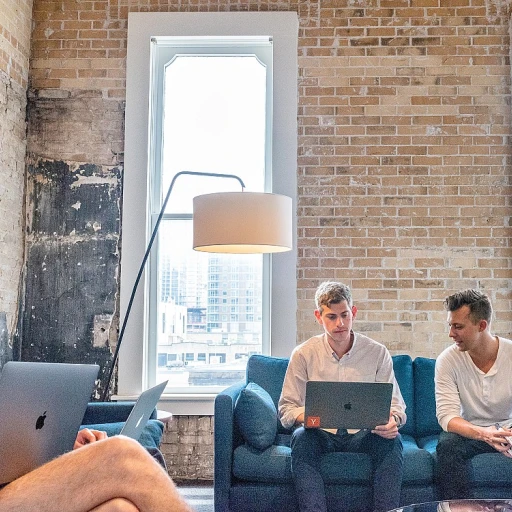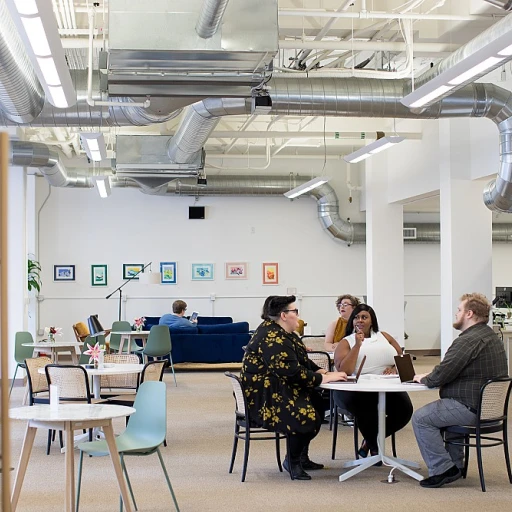
The Role of Technology in Modern Conference Rooms
The Intersection of Innovation and Meetings
The modern conference room has become a central hub of innovation, thanks in large part to the integration of cutting-edge technology. Today's meeting spaces are no longer just about sitting around a large conference table and discussing issues face-to-face. With advancements in video conferencing technology, meetings can now include participants from around the world, all while maintaining a high-quality and seamless experience. Modern office furniture, particularly conference tables, plays a pivotal role in accommodating the various technological needs of hybrid work environments. Instead of bulky, traditional designs, sleek and multi-functional tables are now the norm, providing ample space for devices and connectivity. Glass top tables, for example, add an element of sophistication to room design, while ensuring that the space remains open and inviting. These elements of modern conference room technology not only enhance the room's aesthetic but also support flexible and dynamic collaboration across different teams. Moreover, room technology goes beyond video integration. It's about creating a space that encourages efficiency and productivity through smart design and functionality. Whether it's through sophisticated whiteboards that connect to digital networks or customizable lighting systems that adjust to the meeting's needs, the role of technology is to empower teams to their fullest potential. As we increasingly embrace hybrid work models, technology in meeting spaces ensures seamless connectivity, enabling teams to work together as if they were in the same physical room. This paradigm shift is further elaborated in discussions on the evolution of collaborative workspaces, highlighting the importance of technology in facilitating effective and inclusive meetings.Designing for Flexibility and Collaboration
Creating Adaptable Spaces for Enhanced Interactions
In the changing landscape of conference rooms, flexibility and collaboration are more crucial than ever. Modern meeting spaces must be designed to accommodate the needs of diverse teams and evolving work styles. This calls for a shift in room design, focusing on creating environments that encourage seamless interaction and efficient use of space.
Today's modern conference room is more than just a space for meetings. It is a dynamic environment where ideas are born and strategies are formulated. Incorporating flexible office furniture like movable conference tables and lightweight chairs allows the room to be quickly adapted for both large and small group discussions. This flexibility not only maximizes space but also enhances overall collaboration.
Furthermore, incorporating tools like video conferencing systems helps bridge the gap between physical and virtual attendees, supporting hybrid work environments. High-quality audio and video capabilities are essential for modern meetings, ensuring all participants can communicate effectively regardless of location. Spaces need to be equipped with state-of-the-art room technology that supports a range of devices and connectivity options.
For example, adjustable and technologically integrated meeting tables or a glass top conference table equipped with embedded cable management can reduce clutter and support a clean, professional look. Such advancements in conference room design foster an inclusive and engaging environment, catering to both in-person and remote participation.
Meeting areas should also be designed with versatility in mind, able to transition from a traditional seated meeting room style to an interactive, standing discussion space within minutes. This requires planners to consider how best to support varying communication styles and ensure effective space utilization. A visit to understanding adaptive case management for future workflows could provide further insights into how such adaptability can impact productivity and workflow efficiency in modern office settings.
Sustainability in Conference Room Design
Prioritizing Sustainability in Design Choices
In the contemporary landscape, the commitment to sustainability has transcended beyond a mere trend. When designing modern conference rooms, various elements come into play to ensure the space not only meets present needs but is also prepared for the future. Integrating eco-friendly practices into the design is paramount. To begin with, choosing sustainable office furniture plays a significant role in shaping a responsible meeting space. Modern offices are increasingly opting for conference tables made from recycled materials or responsibly sourced wood. Additionally, utilizing energy-efficient lighting systems not only reduces the carbon footprint but also aligns with broader sustainability goals. The integrative approach involves considering the lifecycle of all elements within the room. For example, employing high-quality materials that are durable and designed to last through years of intensive use can minimize waste. Moreover, the inclusion of plants and natural elements within the rooms can improve air quality, enhance the aesthetic value, and contribute to a healthier and more productive environment. Another aspect to consider is the adaptability of meeting spaces. By designing flexible areas that can be easily rearranged or reconfigured, businesses can maximize the use of their existing space without the need for additional resources. This adaptability is especially beneficial in hybrid work environments, where the traditional usage of rooms changes rapidly. Furthermore, the reduction of paper usage through advanced room technology and the adoption of digital tools can significantly lessen the environmental impact of regular meetings. By leveraging video conferencing technology, organizations can also cut down on travel emissions, contributing further to sustainability efforts. In essence, sustainable design principles, when applied thoughtfully, can enhance the functionality and aesthetic appeal of modern conference rooms, all while supporting a wider commitment to environmental stewardship. For those keen on deepening their understanding of workflow adaptations towards future-ready ecosystems, understanding adaptive case management provides valuable insights.Remote Work Integration
Integrating Remote Work in Conference Room Design
The way we work is continually evolving, and the rise of remote work presents new challenges and opportunities for modern conference rooms. In this era, designing a conference room that supports a hybrid work model is essential. To ensure seamless collaboration among in-person and remote attendees, video conferencing technology has become a staple in meeting spaces.
Incorporating high-quality video conferencing capabilities is crucial. Modern conference rooms must be equipped with state-of-the-art technology that minimizes latency and provides clear audio and visual communication. This technology helps bridge the gap between those at the physical meeting table and those joining virtually from different locations.
Another aspect of remote work integration is ensuring the meeting space design allows for easy adaptability. Conference rooms should have moveable furniture, such as modular conference tables and adaptable seating arrangements. This approach facilitates quick reconfiguration of the room to accommodate different group sizes and types of meetings.
Furthermore, the design of hybrid meeting spaces must prioritize acoustic quality, as poor sound can significantly impact the meeting experience, especially for remote participants. Soundproofing elements and strategic use of materials can help enhance acoustics, making communication clearer and more effective.
Lastly, room technology must integrate with modern office collaboration tools, ensuring that both remote and in-person attendees can easily share and view digital content. This seamless integration not only enhances productivity during meetings but also fosters a more inclusive work environment.












